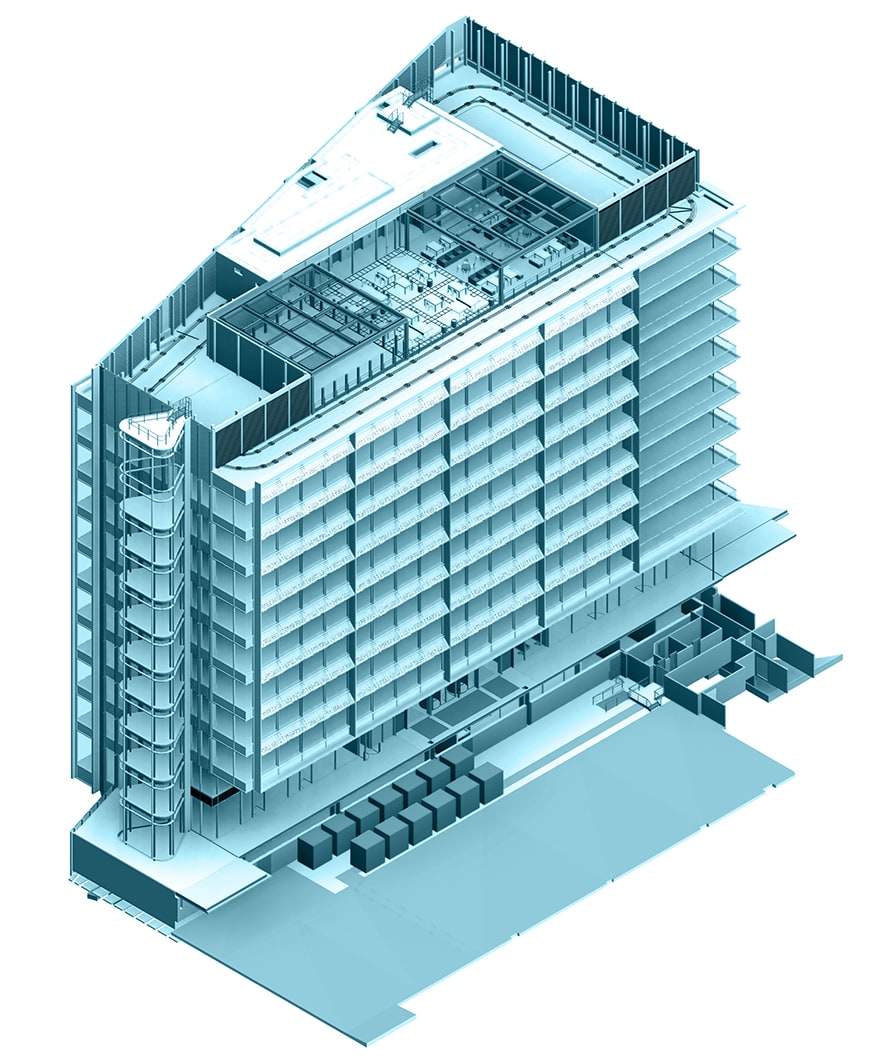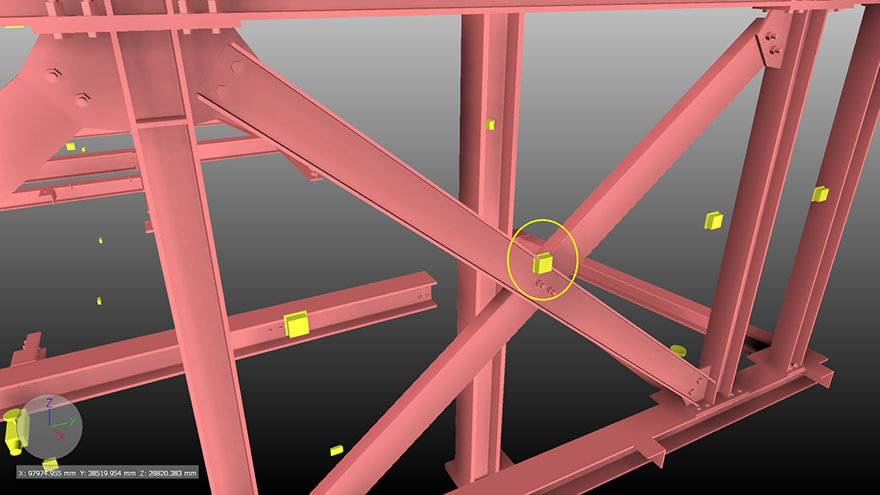- Client: British Land
- Lead Contractor: Wates Construction
- BIM Tools: Autodesk Revit, Navisworks and JIRA
Forming part of the final phase of the Paddington Central mixed-use development due for completion in early 2017, Four Kingdom Street is a 145,200 sq ft building of flexible commercial office space.
During design, which was led by Allies and Morrison, an issue management system, originally used for software bug tracking, helped drastically improve design coordination of the 10-storey office building. Services consultant WSP and structural engineer Ramboll also worked on the project with BIM consultancy GRFN appointed as subconsultant by the architect.
“From the outset, we pushed for separate appointments for us as lead designer, and the BIM coordinator role as we see them as very separate roles,” says Matt Olsen, associate and BIM architectural lead at Allies and Morrison. “There is a benefit to the BIM coordinator being a neutral third party as it avoids a conflict of interest. The role entails a different scope of services, liability, expertise and fee.”
The use of BIM focused on clash analysis and detailed design coordination, rather than subsequent 4D, 5D and 6D aspects, as part of a minimal “ground up” approach devised by GRFN to ensure ample time in the programme, resource for concurrent modelling with design iterations and for data validation, to provide reliable information.
The project was migrated to Revit at RIBA Stage D, and the design team was novated to Wates at the conclusion of RIBA Stage E, when GRFN was also appointed directly by the contractor.
Several subcontractors then produced Revit or IFC models for federation, including facade contractor Focchi, steel structures contractor William Hare, and MEP contractor Anderson Green.

All those involved in detailed design were required to upload an updated Revit or IFC model and attend a BIM workshop every two weeks,
“Focchi’s detailed Revit model was very helpful as an additional tool for checking their detailed design work,” says Olsen. “The level of refinement allowed our team to pick up issues that would have been entirely missed in traditional shop drawings.”
GRFN ran clash analysis in Navisworks, linked to the online issue tracking platform JIRA, which proved a critical tool in fortnightly BIM workshops. Originally designed for software bug tracking,
JIRA was used to identify specific issues, such as groups of clashes representing the same type of problem, and avoided the need to list each clash item by item in a meeting.
When an issue is logged on JIRA, from Navisworks, metadata was assigned to it, such as the type of issue, category of analysis, disciplines involved, location etc. GRFN curated the results of the analysis and Allies and Morrison, as the lead designer, set the prioritisation of the issues to determine the agenda for the issue resolution workshop.
This structure allowed issues to be filtered to highlight only specific critical clashes or clashes in specific locations. The process was far more efficient than using Navisworks alone, explains Olsen: “Things tend to get buried in Navisworks’ automated clash reports, which often include thousands of clashes with no hierarchy explaining what they mean, or their level of importance.”
GRFN’s efforts to simplify BIM processes led to the use of Google Drive as a Common Data Environment for Revit or IFC model exchange. Unlike the client’s corporate CDE, Google Drive had no barrier to entry and file exchange was not delayed by models being bounced due to incorrect metadata or naming. The audit trail was created through the structured use of JIRA’s issue management system.

The stringent approach to clash analysis is expected to dramatically reduce the amount of remedial work required on site
“JIRA allows us to track the resolution of issues and the content of the models, which is much more important than an audit trail of the files alone,” explains Stephen Griffin, director of GRFN.
Technology aside, GRFN saw it as critical to get all contributors to buy in to the iterative process to get full value from modelling concurrently with the progression of the design, finding and addressing issues in a proactive manner.
Under appointment, all those involved in detailed design were required to upload an updated Revit or IFC model and attend a BIM workshop every two weeks, where issues in JIRA were tracked so clashes could be resolved in a timely manner.
“The required level of engagement needs to be agreed and captured in the appointment. It was of massive benefit to design coordination, even though it required quite a lot of effort to get all parties up to that standard,” says Olsen.
Key to this syncing process was ensuring that a nominated project lead, with authority to make design and programme decisions, and a BIM lead, able to understand the technical aspects of the model and take ownership of the modelling process, were present at every meeting.
The stringent approach to clash analysis is expected to dramatically reduce the amount of remedial work required on site, although Olsen says it is still too early to give an accurate figure.
“Clashing detailed subcontractor models, particularly Anderson Green’s MEP model against Ramboll’s structure, meant we saw clashes arising that would be absolutely impossible to catch if we were just exchanging 2D info or had not modelled all the interfaces,” he concludes.
The required level of engagement needs to be agreed and captured in the appointment. It was of massive benefit to design coordination, even though it required quite a lot of effort to get all parties up to that standard.– Matt Olsen, Allies and Morrison
Comments
Comments are closed.














“Unlike the client’s corporate CDE, Google Drive had no barrier to entry and file exchange was not delayed by models being bounced due to incorrect metadata or naming.”
Does that mean that the project team decided on quick and dirty file exchanges rather than put the files in the Client’s own CDE (isn’t he paying to have the audit trail in his platform?) and good practice information management that should allow for quicker and more reliable file search through correct naming etc?